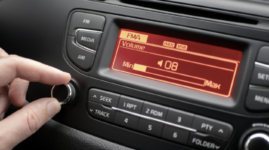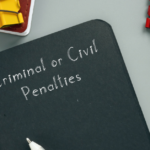Noise Offences Relating to Residences, Business and Vehicles in NSW

Is your noisy neighbour making you crazy? Sick of the P-plater down the street revving their engine?
Or on the other hand, is your neighbour making a mountain out of a molehill when it comes to your gatherings or vehicle?
There are a number of discrete offences related to emitting excessive noise in New South Wales, both at premises such as residences and workplaces, as well as vehicles such as certain motorcycles and hotted-up cars, whether through exhausts and other mechanical parts, or playing loud music from audio systems.
The following outlines some of the key noise-related offences in New South Wales, including the penalties that can apply and potential legal defences available.
Noise abatement directions and offences
Under the Protection of Environment Operations Act 1997 (NSW), Environment Protection Authority officers as well as other public officials such as members of NSW Police, can institute noise abatement procedures if a business, residence or individual is emitting ‘offensive noise’.
It’s important to note however that these procedures do not apply to public land or public authorities.
Offensive noise is defined under the Dictionary of the Act as:
(a) that, by reason of its level, nature, character or quality, or the time at which it is made, or any other circumstances
(i) is harmful to (or is likely to be harmful to) a person who is outside the premises from which it is emitted, or
(ii) interferes unreasonably with (or is likely to interfere unreasonably with) the comfort or repose of a person who is outside the premises from which it is emitted, or
(b) that is of a level, nature, character or quality prescribed by the regulations or that is made at a time, or in other circumstances, prescribed by the regulations.
Under section 276 of the Act a noise abatement direction may be be issued if an authorised person believes that offensive noise is being, or has at any time within the past 7 days been, emitted from any premises. The authorised person may make either or both of the following directions:
- direct the person whom the authorised person believes to be the occupier of the premises to cause the emission of the offensive noise to cease, or
- direct any person whom the authorised person believes to be making or contributing to the making of the noise to cease making or contributing to the making of offensive noise.
Contravening a noise abatement direction could result in a penalty notice of $200 for an individual or $400 for a corporation at the time of writing, or a maximum fine of $3,300 if the person elects (chooses) to take the matter to court.
Noise abatement orders and offences
Under section 268 of the Act the occupier of any premises can apply to the Local Court for a noise abatement order on the basis that offensive noise is being emitted from a nearby business, premises or person (the respondent).
If the Local Court is satisfied (on the balance of probabilities) that the alleged offensive noise exists, or that although abated it is likely to recur on the same premises, the Local Court may make either or both of the following orders:
- an order directing the respondent to abate the offensive noise within the time specified in the order,
- an order directing the respondent to prevent a recurrence of the offensive noise.
Contravening a noise abatement order could result in a maximum penalty of a fine of $3,300.
Offences related to noisy vehicles
There are a number of offences under the Protection of Environment Operations (Noise Control) Regulation 2017 (NSW) related to using motor vehicles which emit offensive noise.
The table below summarises some of these key offences and their resulting penalties.
| Offence | Penalty notice amount (individual) | Fine if taken to court |
| Regulation 5: Use on roads of motor vehicles capable of emitting noise in excess of prescribed level | $150 – for up to 5dB(A)
$250 – for up to 15dB(A) $600 – for more than 15dB(A) |
(a) if the vehicle is capable of emitting noise at a level that exceeds the prescribed noise level for that type of motor vehicle but does not exceed that prescribed noise level by 5 dB(A)–100 penalty units ($11,000) in the case of a corporation or 50 penalty units ($5,500) in the case of an individual, or (b) if the vehicle is capable of emitting noise at a level that exceeds the prescribed noise level for that type of motor vehicle by 5 dB(A) but does not exceed that prescribed noise level by 15 dB(A)–150 penalty units ($16,500) in the case of a corporation or 75 penalty units ($8,250 in the case of an individual, or (c) if the vehicle is capable of emitting noise at a level that exceeds the prescribed noise level for that type of motor vehicle by 15 dB(A) or more–300 penalty units ($33,000) in the case of a corporation or 150 ($16,500) penalty units in the case of an individual. |
| Regulation 6: Use away from roads of vehicles that emit offensive noise | $200 | 100 penalty units ($11,000) in the case of a corporation or 50 penalty units ($5,500) in the case of an individual. |
| Regulation 8: Causes or permits a motor vehicle to be used on residential premises in such a manner that it emits noise that can be heard within any room in any other residential premises (that is not a garage, storage area, bathroom, laundry, toilet or pantry) whether or not any door or window to that room is open–(i) before 8 am or after 8 pm on any Saturday, Sunday or public holiday, or (ii) before 7 am or after 8 pm on any other day, and within 7 days of doing so, the person is warned by an authorised officer or enforcement officer not to cause or permit a motor vehicle to be used on residential premises in that manner, and the person again causes or permits a motor vehicle to be used on residential premises in that manner within 28 days after the warning has been given. |
$200 | 100 penalty units ($11,000) in the case of a corporation or 50 penalty units ($5,500) in the case of an individual. |
| Regulation 11: Driving or using vehicles with defective noise control equipment (similar offences also exist for modifying noise control to increase noise). | $200 | 100 penalty units ($11,000) in the case of a corporation or 50 penalty units ($5,500) in the case of an individual. |
| Regulation 28: Causing or permitting a motor vehicle to be used if the motor vehicle is fitted with a horn that: is capable of emitting noise at a single non-varying loudness and pitch at a noise level of more than 120 dB(A) or is capable of emitting noise otherwise than at a single non-varying loudness and pitch at a noise level of more than 85 dB(A) | $200 | 100 penalty units ($11,000) in the case of a corporation or 50 penalty units ($5,500) in the case of an individual. |
| Regulation 31: Use of motor vehicle sound systems that emit offensive noise | $200 and 2 demerit points | 100 penalty units ($11,000) in the case of a corporation or 50 penalty units ($5,500) in the case of an individual. |
Challenging a noise related offence
It is important to be aware that the onus rests on the prosecution to prove any excessive noise allegation beyond a reasonable doubt.
That being so, those who believe that were on the right side of the law can apply for a review or, if this is refused, elect (choose) to take the matter to court and put the prosecution to proof; in other words, make them prove the allegations.
Arguments put forth in court when defending such allegations include:
- The offence did not occur as alleged, or at all,
- Someone else was driving the car when the violation occurred (misidentification),
- The penalty notice is invalid, due to an error in or insufficiency of material particulars, and/or
- An emergency justified the violation or the conduct occurred as a result of being threatened with imminent serious harm.
It is important to carefully consider whether to elect to take a penalty notice to court, as it can result in a harsher penalty than that which comes with the penalty notice.
That said, a court also has discretion to deal with the matter by way of a non-conviction order such as a section 10 dismissal in the event you wish to plead guilty or are found guilty and seek leniency.
Getting a non-conviction order means there is no fine or demerit points.
Going to court over a traffic offence?
If you are you going to court to contest a traffic offence, call Sydney Criminal Lawyers anytime on 9261 8881 to arrange a free first conference during which one of our experienced traffic lawyers will assess the case, advise you of your options and the best way forward, and fight for the optimal outcome.






